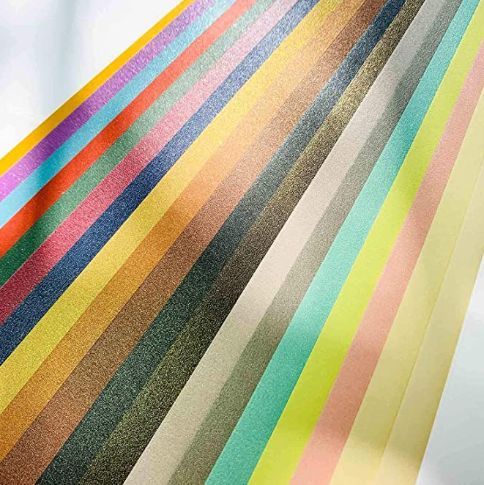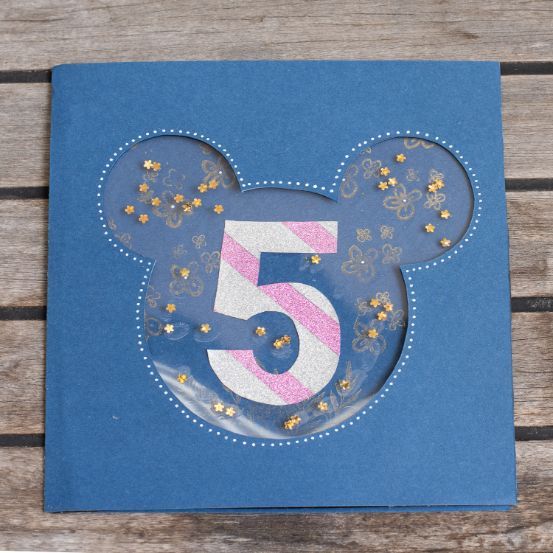Choosing the Best Cardstock for Greeting Cards
Card making is fun, right? Do you know what's not fun? Staring at the shelf in the craft store or office store and wondering which is the best card stock for making cards. Worse, coming home and realising your cardstock is a little too flimsy for what you want even though you're sure it's the same thickness as the great one you got last time. Ugghh!
Well, I'm about to make it easy for you as I've done heaps of research on the best card stock for making cards and have also learned the hard way a few times on what not to buy.
Let's start by talking about the all important subject of weight and how not to get tricked.
Table Of Contents
1. Cardstock weights and thickness
2. Don't get tricked!
3. Paper Weight Guide
4. What are the different weights used for?
1. Cardstock weights and thickness
2. Don't get tricked!
3. Paper Weight Guide
4. What are the different weights used for?
7. Summary
Cardstock weights and thickness
When we discuss the weight of a cardstock, we are effectively discussing the thickness. It can get a bit tricky because the USA uses a different system to describe the weight than in the UK and Australia. But generally, papers with lighter weight are thinner.
In the US, the paper weight is measured by the basis weight and is specified in pounds (lb). The basis paper weight is the weight of a 500 sheet ream of uncut paper. In the UK and Australia, it is measured in grams per square metre (gsm). The higher the lb or gsm, the sturdier the cardstock.
Don't get tricked!
There is one little trick when it comes to cardstock in the USA that many people get fooled by, and that is that you need to also consider the type of card or paper. So when you're standing at the office or craft store and see that 100lb text paper is much cheaper than 100lb cardstock (also called cover), don't get tricked. They are not the same thing and you will be really disappointed if you buy the text paper!
I'll explain a little further ...
There are many different types of paper including but not limited to bond, book, text, copy, index, bristol and cardstock. As mentioned above, 100lb of text paper is not the same thing as 100lb of cardstock. Basically, two different papers are labelled with the same weight ... but they are clearly not the same paper weight.
The problem is that each type of paper has its own standard sheet size and the way the lbs system works is based on 500 sheets of that specific sheet size. So, if 500 sheets of a standard sheet of paper weighs 100lb then that particular paper is referred to as 100lb. This means that an 80lb of text paper can actually be lighter and thinner than 65lb of cardstock or cover.
This makes it really tricky at first for working out the best card stock for greeting cards! I've created a paper weight table below to help:
The system used in both the UK and Australia is not as tricky and generally speaking, the higher the GSM the thicker and sturdier the card is.
We'll talk more about the best card stock for card making below, but in general, you want the packet to say "cover" or "cardstock" and not "text" or "copy".
What are the different weights used for?
Different weights are ideal for different parts of the card. So we want something nice and sturdy for the card base, and if you plan to add lots of embellishments and layers, you may want to consider something a little lighter for these.
65 lb cover/ 175 gsm
This is used when you need something a little lighter such as when you're laying pieces as it won't add excessive weight to your greetings card. It's an ideal weight for using a craft paper punch or die cutting machine. This weight should go through a home printer with no problems.
80 lb cover/ 215 gsm
The 80 lb paper is commonly used for cardmaking and is sturdy enough to use for your standard card base as long as you don't add too many layers. It's also a great thickness for creating embellishments with your craft paper punch and die cutting machine.
When folding cardstock that is 80 lb +, you will need a scoring tool to score the paper first to get a nice smooth fold with no lumps and bumps.
When folding cardstock that is 80 lb +, you will need a scoring tool to score the paper first to get a nice smooth fold with no lumps and bumps.
100 lb cover/ 270 gsm
This heavier weight is a popular choice for your card base, although it may have a little trouble getting through a home printer if you wish to print directly onto it. Many card makers swear by 100lb - 120lb as the best card stock for making cards.
This weight is sturdy enough for embossing.
This weight is sturdy enough for embossing.
130 lb cover/350 gsm
This is really sturdy and is often used for a luxury effect such as wedding invitations. Thicker cardstock is great for projects with 3D elements like novelty cards or card boxes.
This is a bit thick to use as printer paper especially for those printers that feed paper from underneath.
Let's talk about finishes!
Cardstock comes in a whole lot of standard and fun finishes to make your card fabulous. Here's the lowdown on some common ones:
Plain cardstock
Yep, this is just smooth, untextured cardstock. It comes in lots of colors although many people buy lots of white to use as their card base. I know I do! You can never go wrong with a ream of plain white cardstock and a booklet of plain colored cardstock.
Plain colored cardstock also comes in an ultra smooth finish which once you use, you will never want to go back to the standard type. The smooth finish is ideal for stamping and drawing on as the color doesn't bleed.
Glitter finish
Glitter finish cardstock is exactly how it sounds with one side coated in a sparkly layer of glitter. The glitter amount varies and of course it comes in a variety of colors.
Metallic finish
Metallic finish cardstock is a shiny card with a reflective metallic looking finish. It's really quite pretty and coming in a variety of colors, makes for amazing embellishments with your die-cut machine.
Pearlescent finish
Pearlescent finish is popular with wedding cards and while it's not quite shiny, it's definitely not plain. Think of it as having a pretty yet subtle sheet to reflect the light.
Textured finish
Textured and embossed cardstock can really level up your greeting card finishes ranging from a woven type texture through to hundred of little dots.
Patterned finish
This is a cost effective finish for card making as you can usually buy patterned cardstock in pads with a theme, so most of your cardstock is already color coordinated before you begin. Patterns vary widely and can range from simple stripes to detailed pictures through to licensed images such as Disney.
Vellum finish
Vellum is a thin translucent paper that can be purchased in cardstock. It's really beautiful for embellishing cards and you can get some great effects using your craft paper punch or a die cut machine with vellum paper.
What are the essentials when it comes to the best cardstock for greeting cards?
Okay, now that you know what is out there, let's finally talk about the best card stock for cardmaking. I'll start with the essentials:
Essential cardstock for making cards
White cardstock of around 100-120lb is essential for your cardstock base. If you want to change the color, it's as simple as cutting a piece of cardstock to the same size as your card front and glueing it on.
Colored cardstock of around 65lb - 100lb in different colors to decorate your card base is another essential. You can usually buy a whole booklet of standard plain colors.
Technically, the above is all you need to make a greetings card however the below are just awesome to have:
Awesome to have for greeting cards
Patterned paper is nearly up there in the essential items and adds that perfect touch to your cards. I love to use patterned paper on the front of my card, cutting the piece slightly smaller than the front of the card so the white card base acts as a border around my beautiful patterned piece.
Patterned paper often doesn't state the weight however they are usually on the lighter side of around 65lb.
Specialty paper such as the metallic finish, glitter, textured or vellum are fun to experiment with and use in your greetings card. They are not essential but they can really transform your greetings card into something special.
Acetate sheets are not a cardstock as such, but are a see through sheet of plastic. They are used for making novelty cards, like a look through section on the front.
I use watercolor paper a lot with cardmaking to add special touches to my card. It's a paper, usually sold in a book, that's designed to absorb the water without warping the paper like normal cardstock would. I use it to create special backgrounds or images that I then cut out and glue onto my card base.
In summary ...
Now that you know all about cardstock, its weights and its finishes, you will now be able to confidently purchase the best card stock for cards making. Do you have a type of card stock that you just can't live without? We'd love to hear about it!
Don't forget to check out our article about card making supplies so you can better equip yourself with the essential supplies for card making!
Happy cardmaking!
Seen Our Sister Site?
Check out ScrapbookingCoach.com by clicking here.
© Copyright 2022 - CardMakingCollective.com















